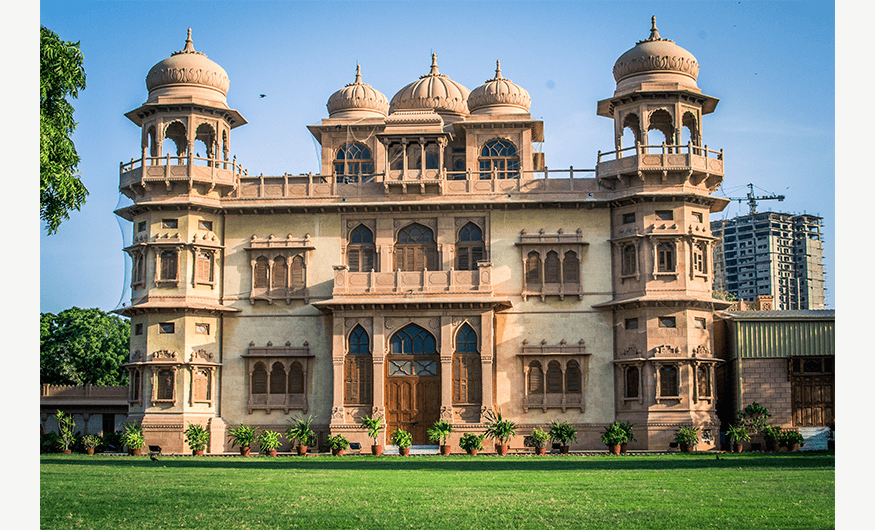Step into one of Karachi’s most stunning landmarks, where history, art, and architecture come alive, welcome to Mohatta Palace Museum. Built almost a century ago, this palace has transformed from a luxurious summer residence into a vibrant museum showcasing Pakistan’s rich culture and heritage. Its grand domes, intricate carvings, and beautiful gardens make it a must-visit spot for tourists and locals alike. In this guide, we’ll take you through the history, architecture, and visitor tips of the Mohatta Palace Museum, helping you plan a perfect cultural visit.
Mohatta Palace Karachi | Location & How to Reach
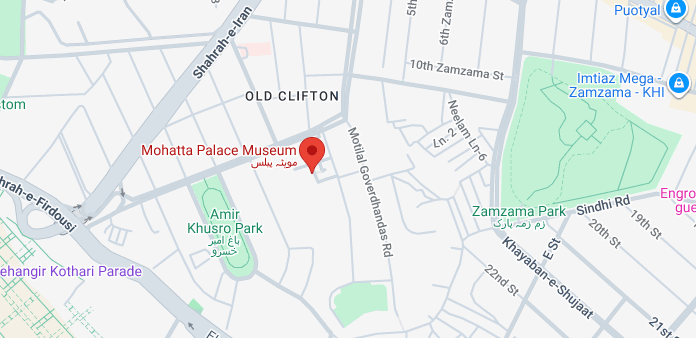
Finding the Mohatta Palace location in Karachi is easy, whether you’re a local or a visitor exploring the city for the first time.
- Mohatta Palace Address: The palace is situated at 7 Hatim Ali Road, Clifton, Karachi, Pakistan, in one of the city’s most vibrant neighborhoods.
- By Car or Taxi: You can reach the palace quickly from major roads like Shahrah-e-Faisal, M.T. Khan Road, or the main Clifton roads. Taxis and ride-hailing services also drop you right at the entrance.
- Public Transport: Bus No. 20, Minibusses N and W30, and local coach services, such as Super Hasan Zai and Khan Coach, have stops nearby, making it convenient for those relying on public transport.
- Walking & Cycling: If you’re already in central Clifton, the palace is within walking or short cycling distance, perfect for a leisurely stroll through the area.
- Nearby Landmarks: While visiting, you can also explore nearby attractions, such as the Abdullah Shah Ghazi Shrine, the iconic Do Talwar monument, and Clifton Beach.
- Parking: For those driving, there’s on-site parking available for private vehicles, ensuring a hassle-free visit.
Whether you’re coming for the architecture, the museum exhibitions, or just a day out, reaching the Mohatta Palace Museum is convenient and straightforward.
Mohatta Palace History
The Mohatta Palace Pakistan was built in 1927 by Shivratan Chandraratan Mohatta, a successful Marwari businessman from Rajasthan. Known for his wealth in trade and real estate, Mohatta envisioned the palace as a luxurious summer residence for his family.
The palace was designed to provide comfort and relaxation, particularly for his ailing wife, allowing her to enjoy the cool sea breeze and the scenic surroundings of Clifton.
Architectural Genius
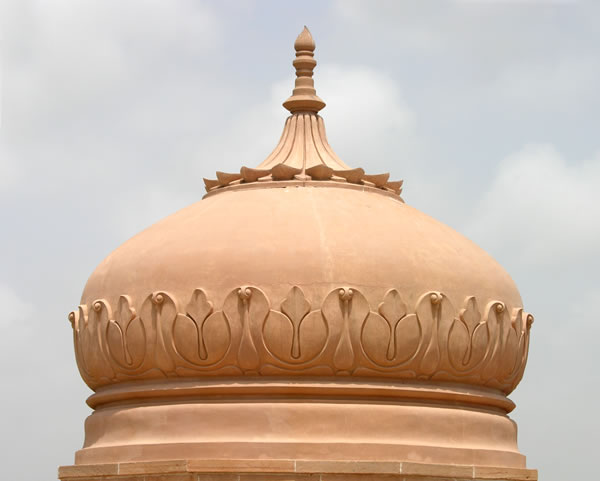
The palace was designed by Agha Ahmed Hussain, one of the pioneering Muslim architects of the Indian subcontinent. Hussain skillfully fused Mughal, Rajput, and Gothic elements, resulting in a structure that is both grand and functional.
Key features include intricate carvings, sweeping staircases, and beautifully landscaped gardens, all of which reflect the era’s opulence and elegance.
Transition After Independence
Following the partition of India in 1947, the Mohatta Palace was repurposed for governmental functions, including offices and official gatherings. Recognizing its historical and architectural significance, the government converted the palace into the Mohatta Palace Museum in 1995. It was opened to the public as a center for art, culture, and heritage.
Cultural and Historical Significance
Today, Mohatta Palace stands as a symbol of Karachi’s colonial past and cultural richness. It offers visitors a glimpse into the lifestyle of the city’s elite in the early 20th century while preserving exquisite craftsmanship and architectural brilliance. Hence, it is a must-visit landmark for both locals and tourists.
Architectural Marvel of Mohatta Palace
Mohatta Palace is a striking example of Indo-Saracenic architecture, a style that beautifully blends Mughal, Rajput, and Gothic influences. This fusion gives the building a unique character, combining the grandeur and symmetry of Mughal design.
It’s boldness and ornamentation of Rajput architecture, and the verticality and arches of the Gothic style. The result is a palace that is both elegant and imposing, capturing the essence of early 20th-century architectural innovation in South Asia.
Materials and Construction
The palace’s construction reflects careful selection of materials to ensure durability and visual appeal:
- Pink Jodhpur Stone: Used extensively for the exterior, giving the palace a warm and majestic hue.
- Local Yellow Gizri Stone: Complements the pink stone, creating a beautiful contrast while incorporating local building resources.
Mohatta Palace Inside | Architectural Features
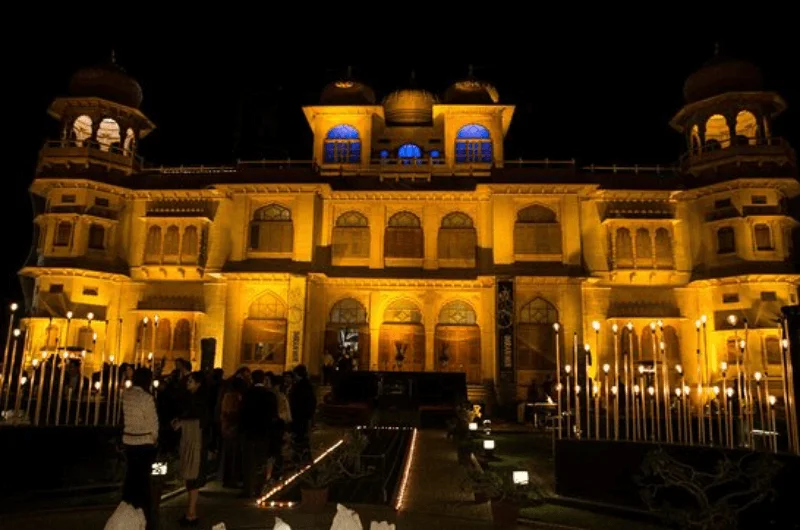
The interiors and exteriors of Mohatta Palace showcase meticulous craftsmanship and artistic detailing:
- Domes: The palace has nine domes, with the central dome being the largest, providing a dramatic focal point for the structure.
- Ornate Carvings: Walls, arches, and pillars feature intricate carvings of peacocks, hibiscus flowers, and marigolds, symbolizing beauty and prosperity.
- Staircases and Interiors: Elegant spiral staircases, polished teak wood interiors, and balustrades with floral motifs add to the palace’s luxurious yet functional design.
Mohatta Palace Museum Inside | Symbolism and Aesthetic Appeal
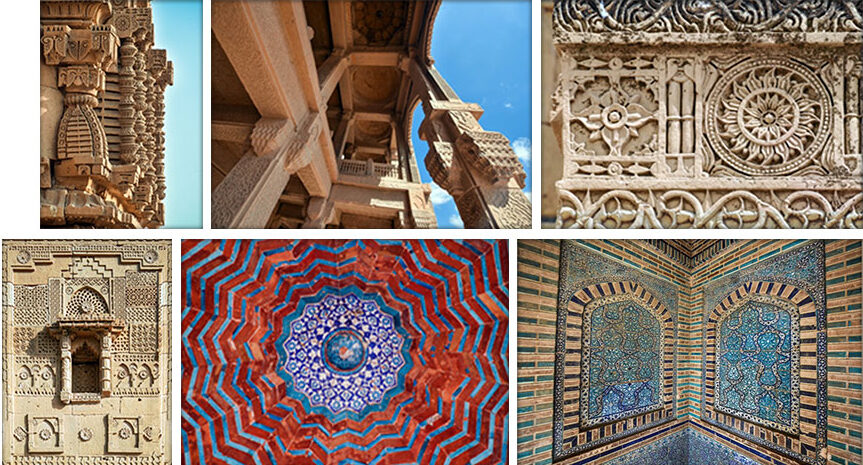
Every element of Mohatta Palace, from the carved floral patterns to the combination of domes and arches, was designed to convey elegance, power, and cultural richness.
The blend of regional and colonial architectural features makes it not just a residence but a visual celebration of artistry and design, drawing visitors and historians alike.
Museum Collections and Exhibitions at Mohatta Palace
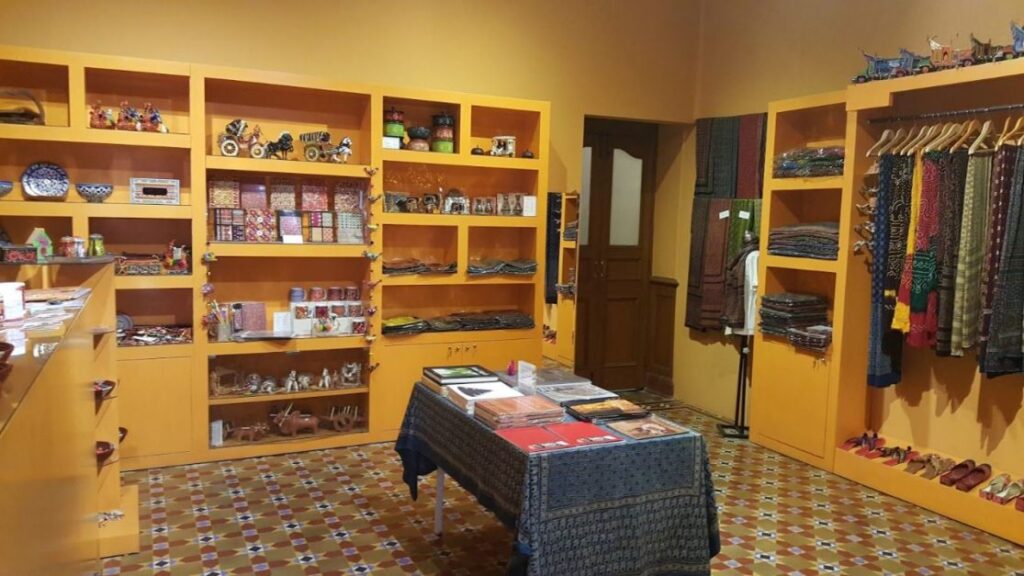
The Mohatta Palace Museum houses an impressive array of permanent collections that reflect Pakistan’s rich cultural and artistic heritage. Visitors can explore:
- Fine and Decorative Arts: Including paintings, sculptures, and intricate decorative objects.
- Portraits: Historical and contemporary portraits of prominent figures, capturing Pakistan’s evolving history.
- Traditional Crafts: Handcrafted textiles, pottery, and artifacts showcasing regional craftsmanship and cultural diversity.
These collections offer a comprehensive glimpse into the artistic traditions and cultural heritage of Pakistan, making the museum a must-visit destination for art enthusiasts and history buffs alike.
Notable Exhibitions
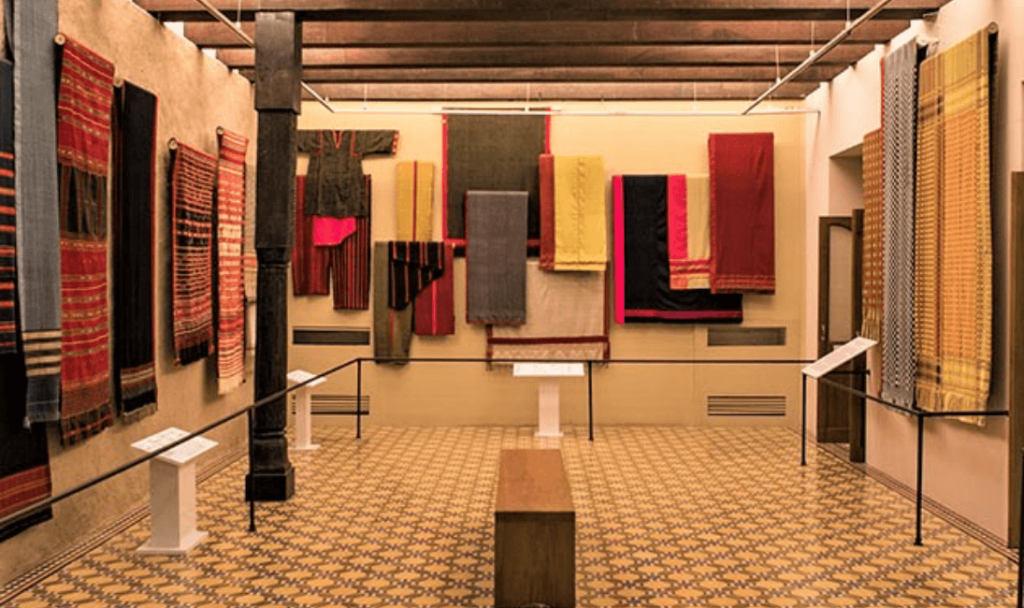
Over the years, the Mohatta Palace Museum has hosted remarkable exhibitions that highlight both historical and contemporary art forms:
- Treasures of the Talpurs – Showcasing the legacy and artifacts of the Talpur dynasty.
- Visions of Divinity – The Arts of Gandhara – Exploring Buddhist art and heritage from the Gandhara region.
- Sadequain, The Holy Sinner – Celebrating the works of the legendary Pakistani artist Sadequain.
- The Tale of the Tile – The Ceramic Tradition of Pakistan – Highlighting Pakistan’s traditional tile-making craft.
- Rebel Angel: Asim Butt 1978–2010 – A contemporary art exhibition honoring the life and work of Asim Butt.
- A Flower from Every Meadow – Displaying botanical-inspired art and installations.
These exhibitions not only educate visitors but also celebrate the diversity and depth of Pakistan’s art and cultural history, reinforcing the Mohatta Palace Museum’s role as a dynamic cultural hub.
Visitor Information
Visiting the Mohatta Palace Museum is a seamless and enriching experience for both locals and tourists.
- Mohatta Palace Timings: The museum is open Tuesday to Sunday, from 11:00 AM to 6:00 PM. It remains closed on Mondays and public holidays. On Fridays, the museum observes a prayer break from 1:00 PM to 3:00 PM.
- Mohatta Palace Tickets: Mohatta Palace ticket price is Rs. 30 for adults, while children under 12 enter for free.
- Facilities: The museum offers guided tours, educational programs, and workshops. Visitors can also enjoy photography in designated areas, ensuring everyone can capture memories without disturbing exhibits.
These attractions make Mohatta Palace an excellent starting point for a cultural and historical tour of Karachi.
Preservation and Conservation Efforts
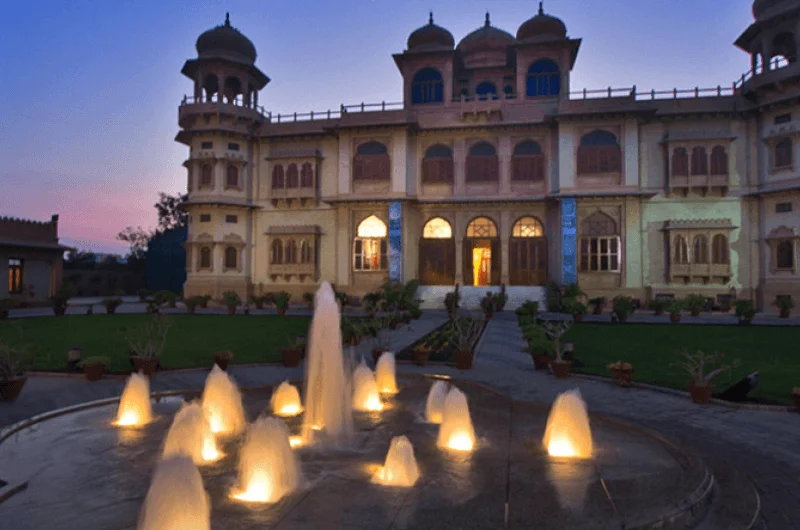
Preserving Mohatta Palace’s grandeur and historical value has been a priority for heritage authorities:
- Structural Maintenance: Continuous restoration ensures that architectural elements, including domes, arches, and stonework, remain intact.
- Cultural Programs: The museum regularly hosts art exhibitions, workshops, and events to keep the space vibrant and engaging.
- Heritage Protection: Policies are in place to protect the palace’s original design, ensure visitor safety, and maintain accessibility for future generations.
Conclusion
Mohatta Palace Museum remains one of Karachi’s must-visit landmarks, offering a perfect blend of history, architecture, and cultural immersion. Visitors can marvel at its Indo-Saracenic design, explore permanent and temporary exhibitions. Also, enjoy nearby attractions for a full day of cultural discovery. Whether you are a tourist, student, or art lover, Mohatta Palace provides a memorable and enriching experience in the heart of Karachi.
For more information on historic buildings of Pakistan, like Badshahi Masjid Lahore, visit Chakor blogs.

